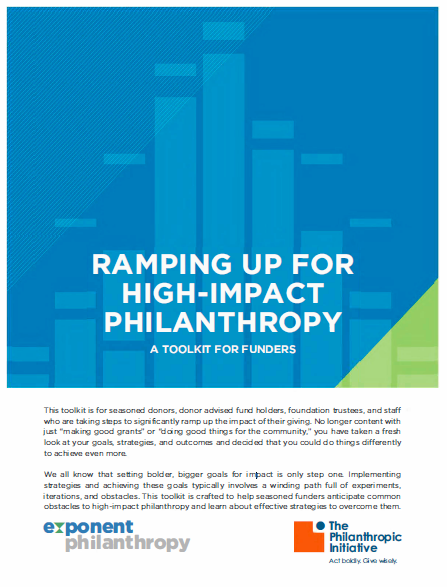
A leadership succession plan is an essential source of guidance, and a commitment to organizational stability, when foundation transitions occur. Specifically, this written document identifies a course of action for when key leaders depart, whether planned or unplanned, permanent or temporary.
To illustrate, consider what happened to one of our members:
“Our foundation had succession planning thrust upon us. We had been talking about succession for some time, and then we were blindsided by illness and death. When you leave, you want the organization to go forward in the way you want. When you’re gone, you can’t influence that as much, so talk and plan for it now.”
Ultimately, the board is responsible for creating and implementing succession plans for leadership transitions. However, if the foundation has staff, the board should work in partnership with the executive director.
The following roles benefit from succession plans:
- Board leader (founder, president, chair): If the foundation has bylaws, the bylaws typically include a basic set of procedures to follow. If the organization is a trust, the same basic procedures are often in the trust document. A succession plan should be consistent with the bylaws or trust document. Similarly, it should name interim decision makers and the processes they are to follow (whether a departure is temporary or permanent).
- Board member: As with transitions by board leaders, a basic process for electing, removing, or accepting the resignation of a board member is likely found in the organization’s bylaws or trust document. In the succession plan, describe details on orientation, rotation, transfer of sensitive documents, term limits, and expectations for board service. Outlining a process to name interim leaders is usually less important.
- Next generation: Family foundations have distinct dynamics at play, but next generation transitions are relevant for all sorts of organizations. While we sometimes use the term next gen to refer to a specific age range (18–35), oftentimes the next generation is in its forties, fifties, or sixties.
- Top staff: Whether the foundation is hiring a top staff person for the first time, or replacing someone, aspects of this transition are distinct from other types of leadership succession.
What does a leadership succession plan include?
A leadership succession plan should list action steps and identify who is responsible for each step consistent with organizational capacity. Also, it’s important that a succession plan reflect the organization’s values, culture, and aspirations. Some boards build different sections of a leadership succession plan over time. Others create an extensive plan as a single project. A good succession plan might be highly detailed, or it may simply outline general principles. Nevertheless, here are several ideal elements of a succession plan:
- Say who among the board will be involved in a leadership selection process and the associated responsibilities.
- Express succession management generationally over time.
- Have expectations about leadership terms for top staff, board members, and future leaders.
- Identify a position within the organization to assume professional leadership in the event of a top staff person’s abrupt departure.
- Include a series of questions and issues that the leadership selection team should consider in the selection/succession process.
How are values, culture, and aspirations expressed in a leadership succession plan?
By creating a succession plan, the standing board establishes its values and aspirations in a way that reaches into the future. At a minimum, the standing board makes clear that it values thoughtfulness and organizational stability. Other expressions of values and culture also become evident as the board develops its plan.
For example, when naming an interim leader, a board oriented toward growing internal capacity may designate an existing role to fill the vacancy. By contrast, a board more comfortable with outside perspectives may outline a process for seeking interim leadership either internally, or from outside the organization.
How do you start planning for foundation transitions?
Good succession plans come out of thinking, planning, and talking to clarify roles, responsibilities, and expectations. Here are some good conversation-starters:
- Are we structured with the future in mind? Similarly, do we attend to future needs for leadership, growth, and opportunity?
- Do we have term limits for staff or board? What are the benefits and costs of doing so?
- Do we attend to issues of governance? This could include having a nominating committee, scheduled retreats, learning sessions, board self-assessment procedures, and more.
- Do we have a clear set of values, and how do we use those values? Moreover, what policies or practices express our values?
- Do we have a system for sharing and growing leadership among board and staff?
- How mature is our organization in age and temperament? Additionally, what are the implications for qualities we value or require in leadership?
- Where do we fit into the philanthropic landscape? That is, who are our peers and partners, and what do their board and staff leaders look like?
- Where do we hope to be as an organization in five, 10, and 20 years?
Foundations that have made leadership succession plans tell us they’re relieved knowing what they’ll do in the event of an emergency or departure.
Photo by Christina Morillo

